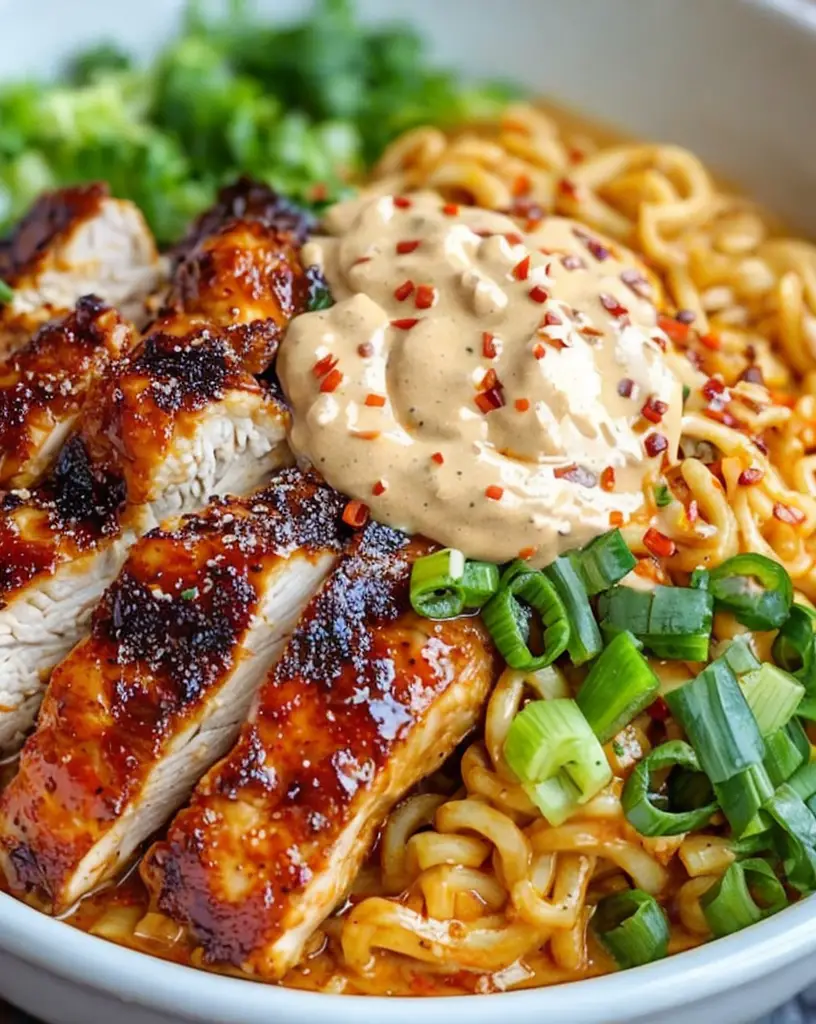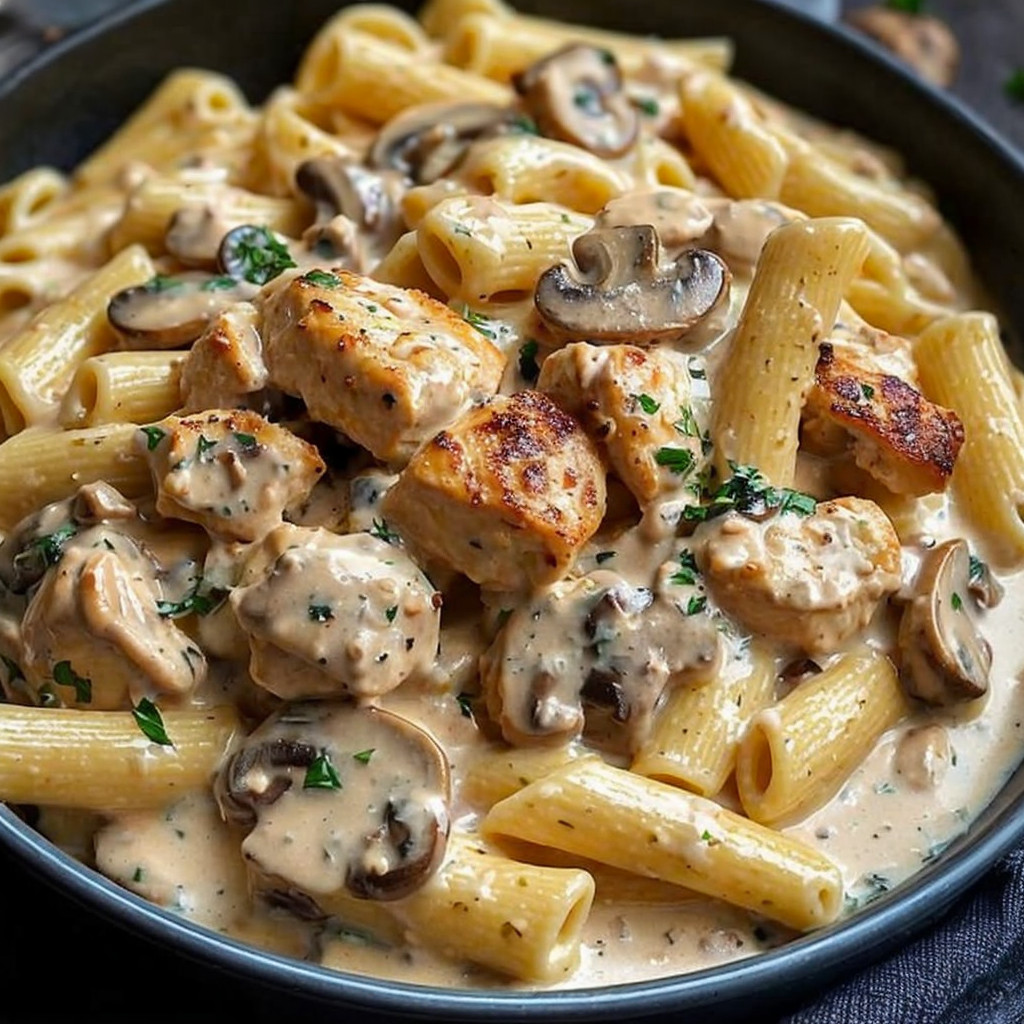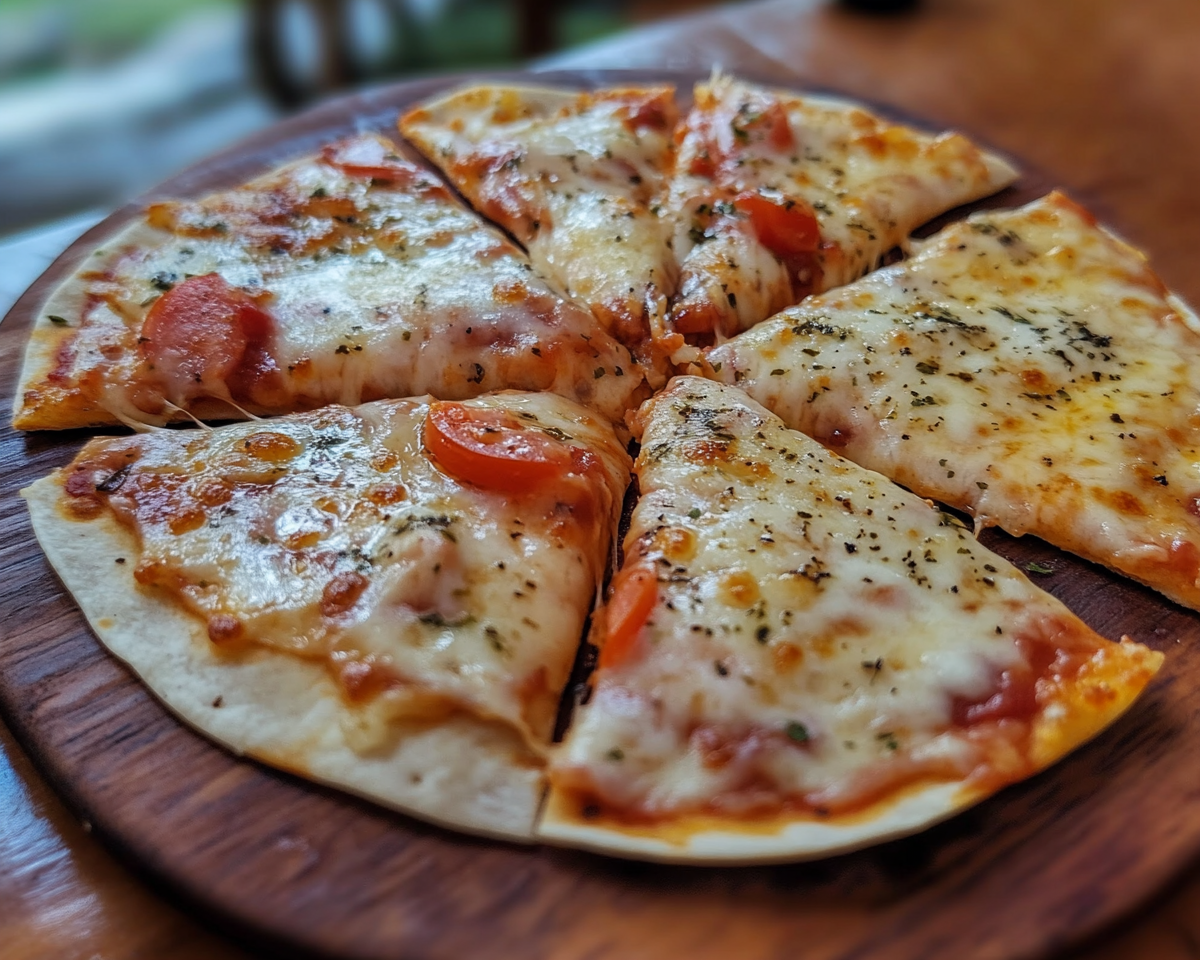Cheeseburger Tot Nachos: A Delicious Fusion Delight
Get ready to dive into a plate of cheesy, meaty goodness with our Cheeseburger Tot Nachos! This delightful recipe combines the classic comfort of cheeseburgers with the playfulness of nachos, featuring crispy potato tots topped with seasoned ground beef, gooey cheese, and fresh toppings. Perfect for game days, parties, or a fun family dinner, these nachos are sure to please both kids and adults alike. As you take your first bite, the melty cheese mingles with hearty beef and crispy tots, creating a mouthwatering explosion of flavor that you won’t want to stop eating!
These Cheeseburger Tot Nachos are not just any nachos; they encapsulate the essence of comfort food. Each layer brings something different, from the savory beef to the creamy cheese, and the freshness of toppings like tomatoes and onions. The aroma of baked cheesy goodness fills the air as you prepare this dish, making it a perfect centerpiece for any gathering. With the ease of preparation and the delectable taste, this recipe will become a staple in your meal rotation.
Quick Recipe Highlights
- Flavor Profile: Expect a delightful balance of savory beef, melted cheese, and fresh toppings that create a burst of flavor in every bite.
- Texture: The crispy texture of the potato tots combined with the creamy cheese and tender beef delivers a satisfying mouthfeel.
- Aroma: The baking process enchants with the rich aroma of cheese melting and beef browning, inviting everyone to the table.
- Visual Appeal: A vibrant display of golden-brown tots, rich cheese, and colorful toppings makes this dish a visual feast.
- Skill Level Needed: Anyone can master this easy recipe, making it ideal for all levels of cooks.
- Special Equipment: You’ll need a baking sheet and an oven to achieve that perfect golden-brown crispiness.
Recipe Overview
- Difficulty Level: This dish is categorized as easy, making it accessible to beginner cooks as well as more experienced ones who want a quick meal solution.
- Category: Cheeseburger Tot Nachos fall under the comfort food category, ideal for casual meals and gatherings.
- Cuisine: While rooted in American cuisine, this recipe reflects both playful and hearty elements of various culinary traditions.
- Cost: The ingredients are budget-friendly, generally costing less than $15 for a family-sized portion.
- Season: Enjoy these nachos year-round, but they’re particularly popular during football season and summer cookouts.
- Occasion: Perfect for casual get-togethers, game days, or movie nights; these nachos are a crowd-pleaser.
Why You’ll Love This Recipe
The first bite of Cheeseburger Tot Nachos will instantly transport you to your favorite burger joint. The deep flavor of seasoned beef perfectly complements the crispy potato tots, creating a harmonious blend of textures that will keep you coming back for more. The melted cheese brings everything together, creating a gooey, rich layer that elevates the dish to new heights. Every forkful is like enjoying a cheeseburger in an exciting, shareable format.
In addition to the amazing taste, this recipe is incredibly convenient to prepare. With minimal cooking steps, you can have a delicious meal ready in just 40 minutes, making it a go-to option for busy weeknights or last-minute gatherings. Simply cook the beef, spray some tots on a tray, and layer your toppings—it’s that easy! No special skills or hours in the kitchen are required; this dish emphasizes fun and simplicity.
Nutritionally, Cheeseburger Tot Nachos offer a balance of protein, carbohydrates, and fats. The ground beef provides a hearty dose of protein, which is essential for building muscle and keeping you full. Plus, by adding fresh toppings like lettuce and tomatoes, you’ll introduce some vitamins and fibers into the dish as well, making it a balanced option for dinner or a snack.
Socially, serving Cheeseburger Tot Nachos turns meal times into fun events. They are perfect for sharing and encouraging everyone to dig in, making them ideal for parties or family movie nights. Guests will feel welcome and engaged as they construct their personalized nacho stacks, adding their favorite toppings. The communal experience fosters connection and joy.
Lastly, cost-effectiveness is a wonderful aspect of this recipe. It utilizes simple, affordable ingredients typically found in most kitchens, so you won’t need to break the bank. With the potential to serve multiple people, this dish is both wallet-friendly and completely satisfying, a win-win for any home chef.
Historical Background and Cultural Significance
The origins of nachos date back to 1943 in Mexico, where they were first created by a group of soldiers and named after their creator. The dish consisted of tortilla chips topped with cheese and peppers, appealing to those craving a quick snack. Over the years, nachos have evolved, especially in the United States, where they have been adapted with various toppings and flavors, leading to countless inventive variations.
Culturally, nachos represent communal dining and flexible eating, making them popular in bars, restaurants, and cinemas. Their versatility has allowed them to blend into American culture, appearing at sporting events and tailgating parties. The Cheeseburger Tot Nachos are a perfect embodiment of this evolution, reflecting both fun and shared experiences.
As time passed, nachos paved the way for creative twists, including gourmet variations. Food enthusiasts have played with ideas, from breakfast nachos to dessert versions, but the Cheeseburger iteration brings beloved American flavors and combines them in a playful manner that resonates with many.
Regional variations also play a crucial role in the nacho story. Different areas of the U.S. have different interpretations, with toppings like BBQ chicken, pulled pork, or seafood showcasing how adaptable this snack can be. The Cheeseburger Tot Nachos take this idea one step further, merging two American classics into a single irresistible dish.
Ingredient Deep Dive
Potato Tots: Potato tots are a quintessential comfort food that originated in the United States. They provide a crunchy exterior and fluffy interior, making them a perfect base for nachos. When selecting tots, look for options that are golden and crisp. Keep them in the freezer to maintain freshness. You can substitute them with homemade hash browns or even sweet potato tots for a twist.
Ground Beef: Ground beef is a staple in American cuisine, celebrated for its versatility. It is rich in protein and essential vitamins. When purchasing ground beef, opt for lean cuts to reduce grease. Store in the refrigerator or freezer, and consider grass-fed options for a more nutritious choice. You can replace beef with ground turkey or a plant-based alternative for lighter or vegetarian options.
Cheese: Cheese adds a rich creaminess to any dish, and when it comes to nachos, this is non-negotiable! Cheddar cheese is a favorite, providing a sharp flavor that pairs beautifully with the other ingredients. For the best melt, choose block cheese over pre-shredded options as it tends to melt better. Store cheese wrapped tightly in the fridge, and consider mixing in some pepper jack for an added kick!
Fresh Toppings: Toppings like diced tomatoes, onions, and lettuce elevate the flavor profile, providing freshness and crunch to the dish. When selecting these ingredients, look for ripe, fresh produce for optimal taste and nutrition. Store vegetables in your fridge’s crisper to maintain freshness. Feel free to substitute with other ingredients like jalapeños, guacamole, or sour cream to customize your nachos to your taste!
Common Mistakes to Avoid
- Overcooking the Tots: Ensure your potato tots are cooked just right—crispy on the outside but fluffy on the inside. Overcooked tots can turn soggy once layered with toppings.
- Using Pre-shredded Cheese: While convenient, pre-shredded cheese often contains anti-caking agents that prevent it from melting smoothly. Opt for block cheese for the best results.
- Skipping the Seasoning: Don’t forget to season your ground beef! Adding salt, pepper, and other spices enhances flavor considerably.
- Heavy Hand with the Toppings: While it’s tempting to pile on lots of toppings, an overwhelming amount can lead to soggy nachos. Aim for balance!
- Not Placing Tots in the Oven Long Enough: For crispy goodness, ensure the tots have enough time in the oven before layering them.
- Using Cold Ingredients: Letting your cheese and toppings come to room temperature before assembling helps in achieving even melting and flavor melding.
- Ignoring Food Safety: Ground beef should be cooked to an internal temperature of 160°F to ensure it’s safe to eat. Always use a meat thermometer!
- Skipping the Layering: For more evenly distributed toppings, layer them thoughtfully instead of dumping them all in one place.
- Neglecting to Preheat: Always preheat your oven prior to baking to ensure even cooking and optimal crispiness.
- Not Letting the Nachos Cool Slightly: Let them cool down for a couple of minutes after removing from the oven to help set the cheese and make eating easier!
Essential Techniques
Cooking the Beef: Properly cooking ground beef is essential to developing flavor. This technique involves browning the meat evenly while ensuring it reaches a safe internal temperature. Use a non-stick skillet over medium heat, break the meat apart with a spatula, and cook until no longer pink. Common pitfalls include overcrowding the pan, which can lead to steaming rather than browning. Aim for a nice sear as a visual cue for success.
Baking the Tots: Baking ensures that your potato tots achieve that desirable golden crispiness. Arrange them in a single layer on a baking sheet and cook according to package instructions. The most critical aspect here is avoiding overcrowding, which can lead to sogginess. Visual cues include a golden-brown color with a beautiful crunch!
Layering Ingredients: Layering your nachos effectively is a crucial technique in achieving the best flavor. Start with a base layer of tots, add meat and cheese, then repeat for more flavor combinations. Preventing sogginess means distributing ingredients evenly, so each bite has a balance of flavors and textures. Look for a well-defined, multi-layered structure as your visual success indicator.
Melting Cheese:** Melting cheese properly requires a careful approach—too hot and it may become greasy. To achieve a creamy consistency, use low heat and combine with a bit of cream, if desired. Keeping an eye on the process prevents an overly greasy or clumpy consistency. Perfect melted cheese is stretchy and smooth!
Pro Tips for Perfect Cheeseburger Tot Nachos
1. Experiment with different cheeses for unique flavors. Blend cheddar and mozzarella for both flavor and meltability.
2. For an added kick, mix in chopped jalapeños or sprinkle your dish with hot sauce.
3. Pre-cook your toppings, such as bacon or sausage, for enhanced depth of flavor.
4. Consider adding black beans or refried beans for additional protein and texture.
5. Bake your nachos for a few minutes after adding the toppings to warm everything through prior to serving.
6. Get creative with garnishes like avocado slices or cilantro for a fresh touch.
7. If you want to make it a complete meal, offer a side of fresh salad—an easy way to balance the dish.
8. Lastly, remember portion control! Serve from the baking dish to prevent excessive snacking.
Variations and Adaptations
For a regional twist, consider New Mexican flavors by using green chile sauce and topping them with crumbled queso fresco. For a seasonal adaptation, swap in sweet potato or cauliflower tots for a fall-inspired take. If you want to cater to dietary modifications, explore using vegan cheese and plant-based protein for a complete vegan option. Adding textures, such as crispy fried onions on top, can provide delightful contrast, elevating your nachos to gourmet status.
Flavor variations can be achieved by incorporating BBQ sauces, taco seasoning, or even buffalo sauce to bring a new dimension to the dish. Presentation alternatives may include serving them in individual portions or on a mini platter, appealing for guests. Don’t hesitate to play with ingredient amounts or types to make the recipe uniquely yours.
Serving and Presentation Guide
Plating your Cheeseburger Tot Nachos can enhance the overall dining experience. Consider using a large, shallow platter for an appealing presentation. Layer the ingredients in a spiral fashion or in sections to create visual intrigue. Garnishing with chopped green onions or cilantro adds a pop of color and freshness.
Pair your nachos with traditional accompaniments, such as salsa, guacamole, and sour cream, serving them in small bowls around the nacho tray. This allows guests to customize their experience and encourages social interaction. For temperature considerations, serve immediately to maintain the freshness of the toppings and the ideal cheese melt. Portion control can help manage indulgence, with smaller servings available for second helpings.
Wine and Beverage Pairing
When it comes to beverages, a crisp lager or a light-bodied white wine such as Sauvignon Blanc pairs beautifully with the flavors of Cheeseburger Tot Nachos. The carbonation from the beer complements the rich, cheesy texture, while the wine adds a refreshing element to balance the dish. For non-alcoholic options, lemonade or iced tea can serve as cool, refreshing pairings.
If you’re considering coffee or tea, a robust dark brew can contrast nicely with the rich flavors of the dish. Temperature matters; both the food and the drinks should be served chilled or refreshing, so your dining experience feels complete and satisfying.
Storage and Shelf Life
Storing your Cheeseburger Tot Nachos is essential to maintain quality. Store them in an airtight container in the refrigerator for up to 3 days. Keep the toppings separate to avoid sogginess. When reheating, use an oven at 350°F for about 10-15 minutes, ensuring they warm through without becoming dry.
Signs of spoilage can include off-smells or changes in texture. Always use visual cues and smell tests before consuming leftovers. Freezing is not recommended due to the nature of the texture, but if you must, store within a week and reheat thoroughly.
Make Ahead Strategies
If you’re planning to make Cheeseburger Tot Nachos ahead, you can prepare the components separately. Brown the beef and refrigerate it for up to 3 days, and keep the toppings separated. Assemble right before your event for the best taste and texture experience. Consider keeping prepared potato tots only slightly undercooked to maintain freshness upon reheating.
Quality impact for pre-prepped ingredients is essential; make a note of freshness dates, especially for perishables. For a convenient assembly, group your ingredients and have them ready at the time of cooking, ensuring a seamless process.
Scaling Instructions
When scaling your cheeseburger tot nachos, consider halving or doubling the ingredients based on your crowd size. For larger portions, group your ingredients across multiple trays, ensuring even distribution for consistent cooking. Equipment adjustments may be necessary if you are significantly increasing the quantities; larger pans or multiple ovens may be required.
Timing modifications depend on the volume; while smaller batches may cook faster, larger ones may need an extra few minutes to ensure everything is heated properly. Always keep an eye on visual cues to confirm doneness across the board!
Nutritional Deep Dive
The macro breakdown of Cheeseburger Tot Nachos typically includes carbohydrates from the potato tots, protein from the beef, and fats from cheese and toppings. You’ll find that each serving can range around 500-700 calories, depending on the quantity of toppings and cheese utilized. Consider balancing your portions, combining hearty ingredients with lighter options to foster a more moderate intake.
Micronutrient analysis shows the inclusion of potassium and vitamin C, particularly when adding fresh vegetables. To maintain a balanced meal, think about portioning serving sizes or opting for healthier alternatives when assembling the dish. Weight management tips, like serving with a side salad, can make a world of difference without sacrificing flavor.
Dietary Adaptations
To cater to gluten-free diets, utilize gluten-free potato tots and be mindful of any sauces or spice blends that may contain gluten. For those avoiding dairy, vegan cheese substitutes can provide a similar tactile experience without the lactose. A low-carb option could feature zucchini or cauliflower tots instead of traditional hash browns.
Keto dieters may prefer ground turkey or beef with low-sugar toppings. For paleo followers, focus on whole food ingredients and ditch processed cheese. Low-FODMAP individuals can enjoy these nachos by carefully selecting toppings and avoiding excess onion or garlic powder for a guilt-free feast.
Troubleshooting Guide
In case you face texture issues, such as soggy nachos, ensure adequate separation of toppings and resist overloading them. Flavor balance can become tricky; if you find it too salty, add a bit of unsalted ingredients or fresh veggies. Temperature problems, like cold cheese, can easily be corrected by allowing the plate to sit out slightly before serving.
Should you encounter equipment challenges, like an insufficiently preheated oven, always verify your settings before starting to oven bake. Timing concerns can be solved by keeping an eye on visual cues; adjust cooking times based on how well everything is coming together in the oven.
Recipe Success Stories
Our community has shared countless delicious outcomes with their variations of Cheeseburger Tot Nachos. From unexpected seasoning twists to creating memorable combinations, families have raved about how this dish becomes the star of any gathering. Readers have suggested colorful garnishes that add both taste and beauty, showcasing their creative flair.
Photography tips provided by readers are always welcome, emphasizing the importance of lighting and presentation for spectacular (Instagram-worthy!) pics. Serving this dish has transformed many mundane nights into magical experiences filled with love, laughter, and satisfied appetites.
Frequently Asked Questions
Can I prepare these Nachos in advance?
Yes, you can prepare the individual components ahead of time—cook the beef and prep your toppings. Assemble just before serving for optimal freshness.
What can I substitute in this recipe?
You can substitute ground turkey for beef, sweet potato tots for regular ones, and vegan cheese for dairy to suit different dietary preferences.
How can I make this dish healthier?
Consider using lean ground beef, adding more fresh veggies, and opting for low-fat cheese. Serving with a salad can also add nutritional value.
Are leftovers available?
Yes, store leftovers in an airtight container in the refrigerator for up to 3 days. Reheat in the oven for the best flavor.
What toppings do you recommend?
Common toppings include lettuce, diced tomatoes, jalapeños, and sour cream. You can get creative based on your preferences!
Can I freeze cheeseburger tot nachos?
While it’s not recommended due to potential texture changes, you may freeze cooked components separately and reassemble later.
What dipping sauces pair well?
Classic choices are guacamole, salsa, and ranch dressing. Barbecue or creamy jalapeño sauce also add great flavors!
What type of cheese works best?
Cheddar is classic, but you might also try a mix of Monterey Jack and Pepper Jack for an extra kick!
Can I use a slow cooker?
Yes! Brown the beef first, then combine all ingredients in a slow cooker on low until warm and delicious.
How spicy can I make it?
Add more jalapeños or some hot sauce for a fiery touch. For milder taste, stick to cheese and fresh toppings.
Additional Resources
If you enjoyed this recipe, check out related recipes like spicy buffalo chicken nachos and classic pulled pork nachos for more inspiration. Dive deeper into technique guides that cover the essentials of achieving crispy textures and perfect layering. Explore ingredient information on versatile toppings to craft your own customized version of this dish, and feel equipped with the right kitchen equipment recommendations.
Join the Conversation
We would love to hear your thoughts and experiences with this recipe! Share your photos on social media and use appropriate hashtags to join our culinary community. Engage with others by leaving comments, tips, or variations you’ve tried. Together, we can make Cheeseburger Tot Nachos an ongoing shared joy across dining tables!
The Recipe
Cheeseburger Tot Nachos
Serves: 4 servings
Prep Time: 15 mins
Cook Time: 25 mins
Total Time: 40 mins
Kitchen Equipment Needed
- Oven
- Baking sheet
- Skillet for browning beef
- Spatula
- Airtight container for storage
Ingredients
- 24 oz frozen potato tots
- 1 lb ground beef
- 2 cups shredded cheddar cheese
- 1 cup diced tomatoes
- 1/2 cup diced onions
- 1/2 cup sliced jalapeños (optional)
- 1/4 cup sour cream (for serving)
- Fresh cilantro, chopped (for garnish)
- Salt and pepper to taste
- Olive oil, for cooking
Directions
- Preheat oven to 400°F. Bake potato tots according to package instructions until crispy.
- In a skillet, heat olive oil over medium heat. Add ground beef, season with salt and pepper, and cook until browned, breaking it apart as it cooks.
- Once the beef is cooked, layer the baked potato tots on a baking sheet. Sprinkle half of the cheese over the top.
- Add the cooked ground beef evenly over the cheese layer.
- Top with the remaining cheese, diced tomatoes, onions, and jalapeños if using.
- Bake in the oven for an additional 10-15 minutes until the cheese is melted and bubbly.
- Remove from the oven and let cool slightly before serving. Garnish with sour cream and fresh cilantro.
Recipe Notes
- You can customize the toppings based on what you enjoy!
- For a spicy kick, add some hot sauce or use spicy sausage instead of beef.
- Feel free to use sweet potato tots for a different flavor profile.
- Store leftover nachos in an airtight container for up to 3 days.




